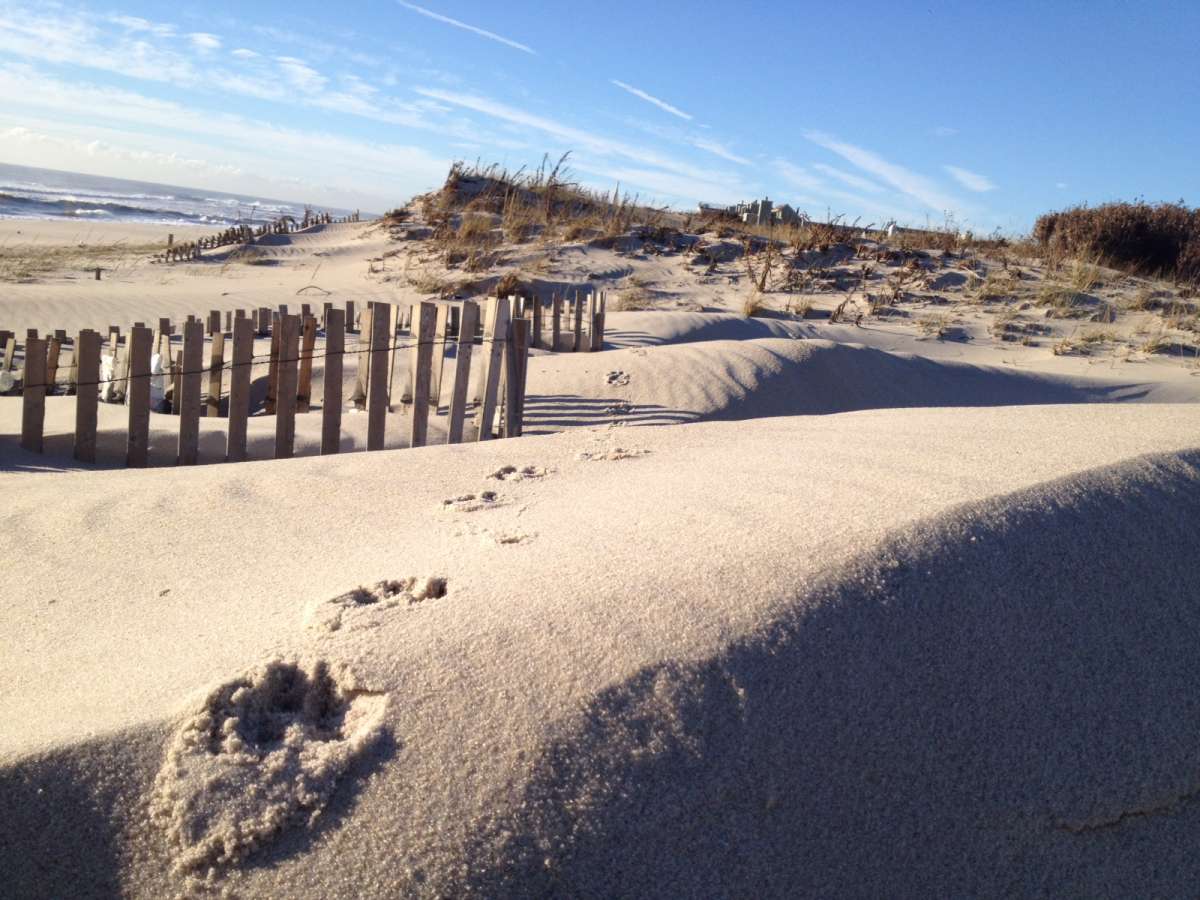Protective dune system grew taller and wider in an Ocean County private community during storm
With many Jersey Shore communities reeling from severely eroded beaches and receding dunes after the latest coastal wallop, one private community in Ocean County actually benefited from the strong northeasterly winds.
In Midway Beach, a private community in Berkeley Township adjacent to Seaside Park and just north of Island Beach State Park, a naturally-built dune system grew higher and wider since last week, according to Dominick Solazzo, 43, a naturalist and member of the community’s board of directors.
“The storm was powerful enough to move enormous amounts of sand,” he explains, pointing at the ocean and moving his hand across the beach and toward the dunes. “From initial observations, all of our beach entrances were completely filled in.”
Standing on the beach entrance, Solazzo explains that a copious amount of sand deposited within the beach entrances during the last several days.
That’s because the gusty northeasterly winds blew sand that was then captured by snow fencing extending along the eastern portion of the dune line and each entrance.
He says that the new sand now filling the entrances — which he calls “cut throughs” — is critical since the dune is at its weakest where there is a break or an inconsistency. During Sandy, he says, most dune failures began where there was an access cut through.”
Walking down onto the beach and along the dune line, Solazzo points to the fencing that extends into the heart of dunes and says, “Just last week, the fencing was mostly exposed. Now, it’s mostly covered with sand. You can see the dune profile has changed from a flat beach to one with a noticeably steeper slope.”
A dune evangelist, Solazzo is an outspoken proponent of naturally building the protective mounds of sand, as opposed to engineers and heavy machinery doing the work.
“A nor’easter normally provokes mental images of flooding, strong winds, property damage, and coastal erosion,” he says. “But given ideal conditions, it can be used as a management tool to mitigate coastal erosion by building sand dunes.”
Inspired by a local resident and an ecology professor at Rutgers University’s Cook College, Solazzo has been spearheading dune management in the Midway Beach section of South Seaside Park for over a decade.
Midway Beach’s dune building program began over three decades ago, growing gradually over time, according to Solazzo, who points out that as a private community, the residents decide how to manage their beach.
“The dune here has grown significantly during the monitoring history with sand accumulating around a series of dune fence installations,” a 2005 New Jersey Beach Profile Network Annual Report prepared by Stockton College’s Coastal Research Center notes. “Initially there was no dune, just a bare sand hill about 6 feet lower than the present crest elevation. The dune width as of November 2004 had reached 130 feet between the landward fence and seaward toe with a maximum crest elevation of 22.3 feet NGVD.”
With Solazzo’s stewardship and an army of dedicated volunteers, the dune system grew even more over the last decade. No tax dollars were ever spent growing or maintaining the dune system in Midway Beach.
But what’s most paramount, he says, is proper management to maintain the system’s viability and protective nature.
“If you add storm fencing and native vegetation to the mix of strong onshore winds a nor’easter provides, you have the birth of a dune,” he stresses, pointing to a line of dune fence arranged in a saw-tooth fashion.
“Wind blown sand becomes obstructed by the fencing and deposited as its velocity slows. The combination of dune fencing and natural vegetation adds the strength of resistance to the dune like rebar to concrete. As easily as a healthy and well-managed dunes grabs the sand it also easily resists any erosional pressure put on it by the same force that helps it grow.”
And that’s exactly why Midway Beach was spared from Sandy.
The 2013 New Jersey Beach Profile Network Annual Report found that the dune in Midway Beach “was wide and high enough to be an island of low damage in an otherwise devastated region.”
About a third of the community’s dune system was lost to the Atlantic Ocean, but water never made it to the street, the dune guru says.
Solazzo stresses that therein lies the beauty of letting nature work for you, pointing to sand blowing directly into the dunes during yesterday’s nor’easter.
“By repairing our fencing and planting dune grass after Sandy, coastal storms since then have blown sand back into our dunes. The dunes is some places are approaching the same volume or size as they were prior to Sandy. With just a little assistance, nature can work for us”
“Mother Nature is not always against us.”
WHYY is your source for fact-based, in-depth journalism and information. As a nonprofit organization, we rely on financial support from readers like you. Please give today.













